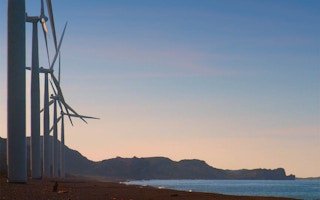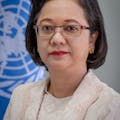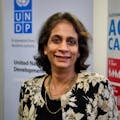As lockdowns ease in countries across Asia and the Pacific in the wake of the Covid-19 pandemic, one thing is clear: A return to business as usual is unimaginable in a region that was already off track to meet the United Nations Sustainable Development Goals (SDGs).
To continue reading, subscribe to Eco‑Business.
There's something for everyone. We offer a range of subscription plans.
- Access our stories and receive our Insights Weekly newsletter with the free EB Member plan.
- Unlock unlimited access to our content and archive with EB Circle.
- Publish your content with EB Premium.
The virtual high-level Political Forum on Sustainable Development recently convened governments and stakeholders across the globe to focus on the imperative to build back better while keeping an eye on the global goals.
Asia was the first to be hit by Covid-19 and feel its devastating social and economic impacts. Efforts to respond to the pandemic have revealed how many people in our societies live precariously close to poverty and hunger, without access to essential services.
Between 90 million and 400 million people in Asia and the Pacific may be pushed back into poverty, living on less than $3.20 a day. Many countries are taking bold actions to minimise the loss of life and economic costs, estimated in May by ADB at $1.7 trillion to $2.5 trillion in the region alone.
Mission orientation and mobilising fiscal and social support that realise the SDGs
As attention shifts from the immediate health and human effects of the pandemic to addressing its social and economic effects, governments and societies face unprecedented policy, regulatory and fiscal choices. The SDGs— a commitment to eradicate poverty and achieve sustainable development, globally, by 2030—can serve as a beacon in these turbulent times.
Our new joint report Fast-tracking the SDGs: Driving Asia Pacific Transformations, highlights six entry points for achieving the SDGs in the face of the pandemic. These include strengthening human well-being and capabilities, shifting towards sustainable and just economies, building sustainable food systems, achieving energy decarbonisation and universal access to energy, promoting sustainable urban and peri-urban development, and securing the global environmental commons.
Each of these entry points has been disrupted by the pandemic. Yet, these disruptions may create opportunities for new approaches to deliver on SDG targets that reflect the ambitions of the 2030 Agenda.
What will it take to align systems and institutions with the SDGs as they build forward?
The pandemic has exposed fragility and systemic gaps in many key systems. However, there are many workable strategies that countries have used, both before and after Covid-19, to accelerate progress related to development goals and strengthen resilience. Countries have taken steps to extend universal health care systems, strengthen social protection systems, including cash transfer and food distribution systems for vulnerable households.
Accurate and regular data have been key to such efforts. Innovating to help the most disadvantaged access financing and small and medium-sized enterprise credits have also been vital. Several countries have taken comprehensive approaches to various forms of discrimination, particularly related to gender and gender-based violence. Partnerships, including with the private sector and financing institutions, have played a critical role in fostering creative solutions. These experiences provide grounds for optimism.
Policy revolutions to manage complexity
Responses to the Covid-19 crisis must be centred on the well-being of people, empowering them and advancing equality. Driving change in the people-environment nexus to protect the health of people and natural resources is key to a future that does not repeat the crisis we are in today.
We need a revolution in policy mindset and practice. Inclusive and accountable governance systems, adaptive institutions with resilience to future shocks, universal social protection and health insurance and stronger digital infrastructure are part of the transformations needed. All are driven by low carbon and environmentally sustainable infrastructure and the transition to clean energy.
Several countries in Asia and the Pacific are developing ambitious new strategies for a green recovery and inclusive approaches to development. The Republic of Korea recently announced a New Deal based on two central pillars: digitisation and decarbonisation. Many countries in the Pacific, already proponents of ambitious clean energy targets and climate action, are focusing on “blue recovery”, seizing the opportunity to promote more sustainable approaches to fisheries management.
India recently announced operating the largest solar power plant in the region. China is creating more jobs in the renewable energy sector than in fossil fuel industries. Many countries in our region are expanding social protection systems as part of their Covid-19 recovery to go beyond a temporary patch and include the marginalised, such as informal sector workers.
Institutions such as the United Nations and ADB have mobilised to support a shared response to the crisis. Now it is vital that we enable countries to secure the support they need to achieve the SDGs.
Armida Salsiah Alisjahbana is the United Nations under-secretary-general and executive secretary of the Economic and Social Commission for Asia and the Pacific (ESCAP).
Kanni Wignaraja is the United Nations assistant secretary-general and director of the Regional Bureau for Asia and the Pacific at United Nations Development Programme (UNDP).
Bambang Susantono is the vice-president for Knowledge Management and Sustainable Development at Asian Development Bank (ADB).













